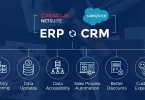Translating technical documents is not like translating everyday content. Precision is everything. A single mistranslation can lead to serious consequences, from compliance violations and legal issues to safety hazards and financial losses. Whether you’re dealing with instruction manuals, regulatory filings, engineering specifications, or patents, accuracy isn’t optional – it’s essential.
If your business operates internationally, you need a solid strategy to ensure every technical document is translated correctly and consistently.
Here are five key tips to help you get it right.
- Work With Industry-Specialized Translators
Not all translators are equipped to handle technical terminology, industry jargon, or complex instructions. General translators might be fine for marketing materials, but technical documents require experts who are fluent in both the language and the subject matter.
For example, a translator working on medical device instructions should have expertise in biomedical engineering or healthcare regulations. A patent translator should understand intellectual property law and technical details related to the invention. Without this background, translations can be inaccurate or misleading.
Working with certified, human translators ensures that terminology, formatting, and intent are preserved. Many industries also have compliance requirements for translated materials, meaning mistakes could lead to legal trouble. Finding a translator with experience in your specific field will save you from costly errors.
- Use Translation Memory Tools for Consistency
Technical documents often contain repetitive phrases, standard terminology, and specific formatting rules. A good way to maintain consistency across multiple documents and languages is by using Translation Memory (TM) tools.
Translation memory software stores previously translated content so that when the same phrase or term appears in a new document, it automatically suggests the preferred translation. This is particularly useful for:
- User manuals that follow the same structure across multiple versions.
- Legal and compliance documents that require precise wording.
- Product specifications where terminology must be uniform.
Using TM tools reduces human error, speeds up translation time, and helps maintain brand consistency. It’s a must-have for companies that frequently translate technical materials in multiple languages.
- Ensure Proper Formatting for Complex Documents
Technical documents aren’t just about words – they often include tables, charts, diagrams, blueprints, and formulas. Formatting errors can render instructions useless or misleading, which is why correct layout and structure are just as important as the translation itself.
For example, in engineering schematics, a misplaced label or reversed unit conversion can cause serious confusion or even dangerous miscalculations. In pharmaceutical packaging, improper formatting of dosage instructions could lead to incorrect medication use.
To avoid these risks, always:
- Work with translators who understand the visual structure of technical documents.
- Ensure that measurements, units, and date formats match local standards.
- Use software that supports multilingual document formatting to prevent text from shifting in design-heavy materials.
A well-formatted technical document should be clear, visually structured, and easy to follow – regardless of the language.
- Review Translations With Subject Matter Experts
Even with experienced translators, technical documents should always be reviewed by a subject matter expert (SME) before they are finalized. SMEs understand the nuances of the industry and can spot errors or inconsistencies that even skilled translators might miss.
For instance, if a construction company translates building codes and safety regulations, a structural engineer should review the document to confirm that the technical details align with industry standards. If a medical company is translating clinical trial documentation, a physician or regulatory expert should verify that the terminology is accurate and compliant.
This review process acts as a final safeguard to ensure that translated documents are factually and technically correct. A single overlooked error can have legal, financial, or safety repercussions, so this step should never be skipped.
- Adapt for Cultural and Legal Considerations in Different Markets
Technical documents need to be culturally and legally appropriate for the market where they will be used. Laws, standards, and best practices vary by country, so a direct translation may not be enough.
For example:
- Safety standards differ between the U.S. and the EU, so a translated instruction manual for machinery must comply with local safety regulations.
- Medical documentation may require different legal disclaimers depending on the country’s healthcare system.
- Electrical voltage and unit measurements vary across regions, meaning translated technical specs must reflect local standards.
Ignoring these differences can result in regulatory penalties, product recalls, or even lawsuits. Always ensure that translated documents meet both linguistic and legal requirements for the target market.
Don’t Leave Anything to Chance
There are plenty of ways to take shortcuts with translations – you likely know of a few. But it’s important that you don’t leave anything to chance when it comes to technical documents. This isn’t just a box to check. This is a critically important process that can affect safety, compliance, revenue, etc. By approaching this process correctly – meaning, using human translators who are trained on technical documents – you can guarantee much better results. And that’s an investment that’s well worth the upfront cost!







